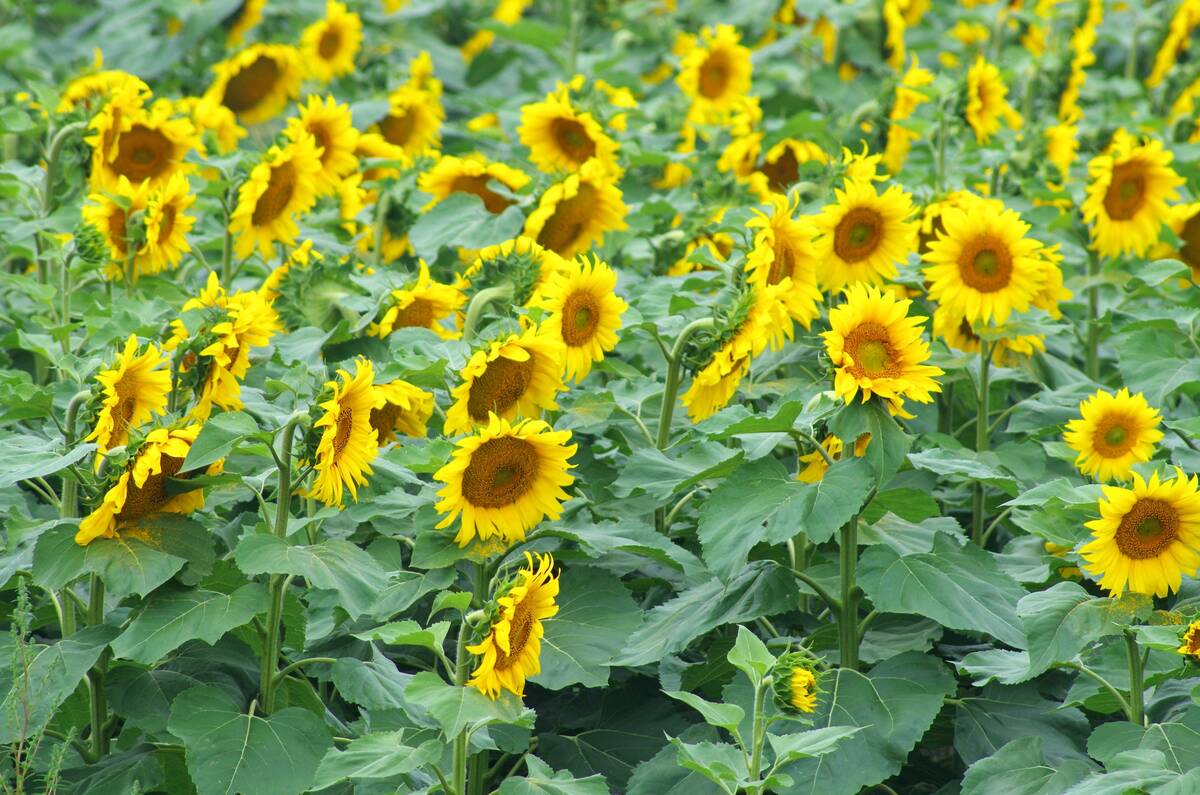MUNDARE, Alta. Ñ Robert Ferris looks at a broken drive belt on his combine and shrugs. Repairs at harvest are nothing new for the Mundare farmer, but it’s April and he still has 2,000 acres to combine before he can begin to seed.
A breakdown on one of his two combines is not something he needs to start the crop year.
What’s worse is that AFSC, the agency in charge of crop insurance in Alberta, is making him harvest his canola.
“It’s going through the motions. It’s an unsalable product we’re combining,” said Ferris.
Read Also

Made-in-Manitoba sunflower hybrid heads to market
Glacier FarmMedia – Manitoba’s confection sunflower growers will have a new seed option next spring that was developed specifically to…
Adverse weather prevented him from finishing harvest last fall.
“I’m depreciating my combine just to satisfy crop insurance. They demanded I combine it. It’s a big expense for me.”
He estimates it costs at least $160 an acre to operate the combine, as well the salaries for his hired men, his fuel bill and the cost of storing and handling the worthless crop.
Like most crops that were under snow all winter, his canola is contaminated with mouse feces that elevators don’t want.
Kelly Bauer, manager of Agricore United’s high throughput elevator in Star, west of Mundare, said the company’s policy is not to take spring-threshed grain because it likely contains excreta from rodents and other animals.
“There’s a lot of food safety concerns,” said Bauer.
He said the company is looking for markets for the spring-threshed crop, such as crushing plants, but those are limited.
Ferris said even in the middle of December, it was obvious the canola would have to be written off.
“It’s just part of the game.”
He said crop insurance recently told him he could take a representative sample of the fields and submit them for grading, but a settlement would take about three weeks and he can’t afford to wait that long.
In a nearby field, Wayne Huisman is harvesting his final 200 acres. He had 650 acres of wheat and canola left in the field after the snow fell last fall and some of the canola is running at 30 bushels per acre.
However, because of the higher yield, it’s unlikely he will be able to collect crop insurance, even though few grain companies will accept the crop.
Huisman said he plans to hold onto it until prices rise.
“I’ll keep it in the bin.”
Dwayne Campbell, senior manager with AFSC’s insurance operations, said claims are dealt with in the order they are received at head office in Lacombe, Alta.
He said while some producers are chopping swaths and leaving them in the fields, many are harvesting their crops in hopes of salvaging some value.
“Most producers are making an effort to harvest it and put it in a bin, but there’s some uncertainty to market opportunities.”
Campbell said farmers can take a field sample and receive an estimated yield and grade or harvest the field before they get their yield and grade.
“You can’t force people to do anything. They are insured for a production guarantee and a guaranteed grade. If they decide they don’t want to harvest, then what they do is they accept the yield and grade as to what we see in the field.”
Campbell said warm weather in mid-April allowed farmers to harvest their crops, but he doesn’t have a good estimate of how much unharvested crop was left in the field over winter.














